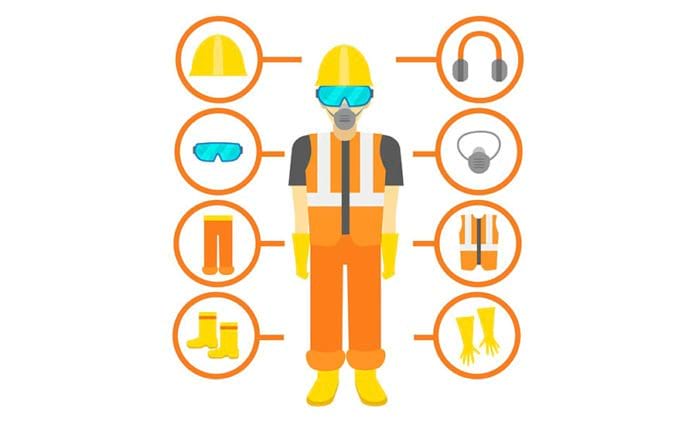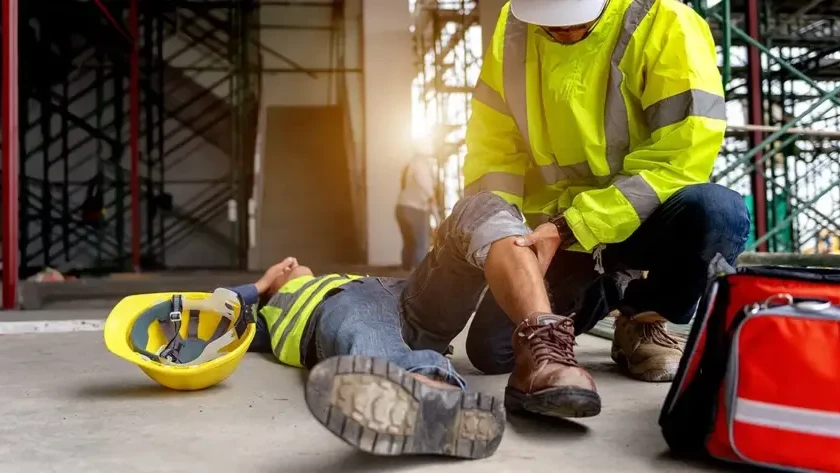As we discussed in an earlier blog, workplace risk assessments are powerful tools in identifying and improving workplace safety weaknesses. As such, it is important that managers know exactly how to conduct a risk assessment to create the safest possible environment for their employees. This blog will discuss 5 steps that managers should undertake to do so.
An important distinction should first be made between a hazard and a risk.
A risk is the likelihood that harm (death, injury or illness) might occur when exposed to a hazard.
5 Steps in a workplace safety risk assessment
Step 1: Identify the Hazards
The first step in conducting a risk assessment should be identifying the hazards present in your workplace. This may involve taking a walk around your workplace and looking at how activities are performed, the tools used, the work procedures and the environment.
You should also be observing your employees as they complete their daily tasks to identify additional risks and to see if there are better ways of completing these tasks. Communicating with your employees is vital at this stage as they are the most knowledgeable on issues that you may not be aware of.
You can also consult other professionals outside of your business, such as health and workplace safety experts and machinists, to gain more insights into any other hazards that may be present in your workplace.
Another source of information regarding potential hazards is manufacturer’s instructions or data sheets. These can be used to identify specific chemicals and equipment, putting hazards in their true perspective.
Step 2: Decide Who Might be Harmed and How
For each hazard identified above, you should make it clear who might be harmed. You don’t have to list individual names in the risk assessment, but you should identify groups of people like ‘people working in the storeroom’ or ‘passer-bys.’
Some considerations:
- Some workers have particular requirements. New and young workers, migrant workers, new or expectant mothers and people with disabilities are more prone to hazards.
- Cleaners, visitors, maintenance workers, etc, are not present at your workplace all the time.
- Members of the public can be harmed by your activities.
- Ask others if they can think of anyone you may have missed.

Step 3: Evaluate the Risks and Decide on Precautions
Next up is deciding on what to do in response to the hazards. An easy way of doing so involves comparing what you are doing with good practice.
Look at what controls you currently have in place and how they are organised and then compare this to good practice and see if there is more that you could be doing to bring yourself up to this standard. This may involve asking yourself the following questions:
- Can I get rid of the hazard altogether?
- If not, how can I control the risks so that harm is unlikely?
The following are the steps that should be undertaken to control the hazards. They are in order of when they should be undertaken, if possible:
- Try a less risky option (e.g. switching to a less hazardous chemical)
- Prevent access to the hazard
- Organise work to reduce exposure to the hazard (e.g. putting barriers between pedestrians and traffic)
- Issue personal protective equipment (e.g. clothing, footwear, goggles)
- Provide welfare facilities (e.g. first aid kits and washing facilities)
The financial cost of implementing these controls are minimal in comparison to the costs that occur if an accident does happen.
Fostering a culture that emphasises workplace safety will save on costs associated with sick pay, training staff and hiring new staff if an employee gets injured. Additionally, you will avoid fines, lawsuits, and penalties from non-compliance with occupational workplace safety laws.
Step 4: Record your Findings and Implement Them
It is now time to put all your findings together in a report and share it with your employees. This will encourage you to actually put the results of your risk assessment into practice.
This is also the time to provide additional training for changes to procedures, updates to your workplace safety policy and to remind your employees of their responsibilities in creating a safe work environment.
A timeline can be used in your risk assessment to chart your course of action, since some hazards can be fixed immediately while others may take some time. This timeline can also be used to indicate the temporary solutions in place for hazards that will take time to fully correct. You should identify, assign, and put a date on the responsibilities of those who are carrying out any changes.
Sample templates of risk assessments are available here.
Step 5: Regularly Review and Update Your Risk Assessment
It is likely that things will change within your business and your environment over time. There may be changes in the products or services you provide or changes to workplace safety regulation. It is therefore imperative you also update your risk assessment to keep pace with these changes.
Questions that you should periodically ask yourself are:
What areas have these changes occurred?
Are there improvements you still need to make?
Have other people spotted a problem?
Have you learnt anything from accidents or near misses?
You should be keeping up to date with all incidents that take place in your workplace. Handle these incidents immediately and record the actions that were taken to reduce the risk of it occurring again.
Setting a date to review and update your risk assessment every year will make it easier to place it as a priority, and demonstrate your commitment to workplace safety.
Conclusion
Although different businesses will have different methods of formulating their risk assessments, there are a few basic steps that all managers should follow. These include identifying all hazards, deciding who might be harmed and how, evaluating the risks and deciding precautions, recording findings and implementing them, and regularly reviewing and updating the risk assessment. By following these steps, managers will ensure that they are creating an environment that prioritises workplace safety.
Let's Get Started
Interested in learning more about how Polonious can help?
Get a free consultation or demo with one of our experts




